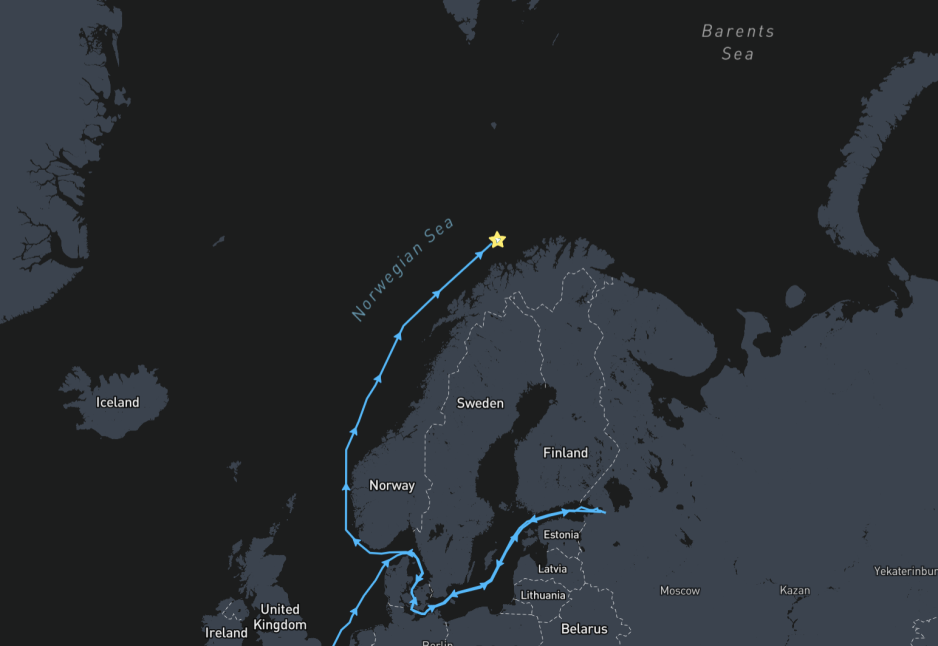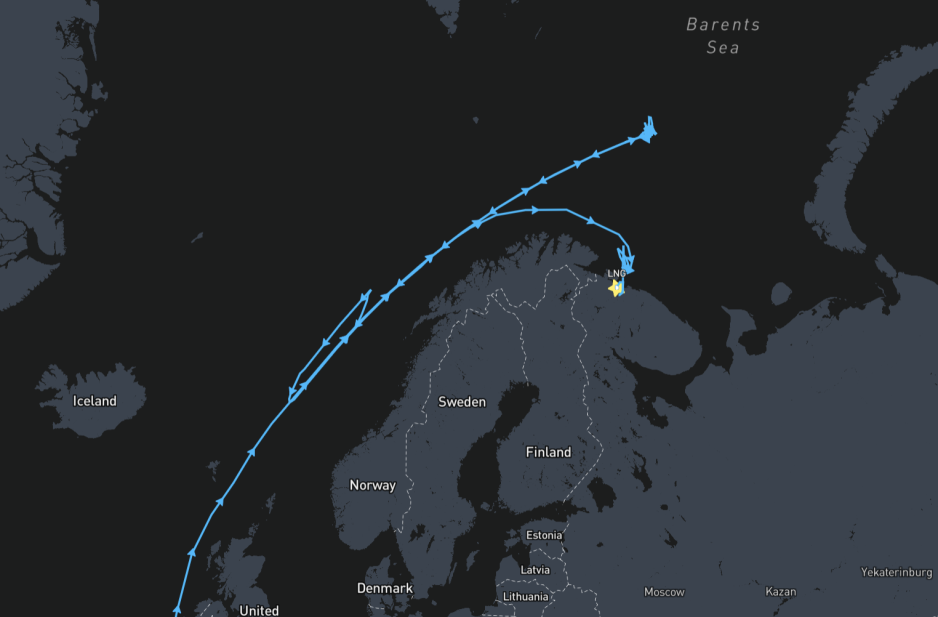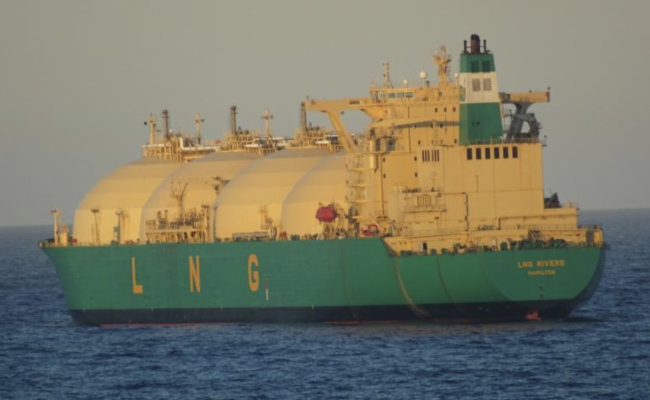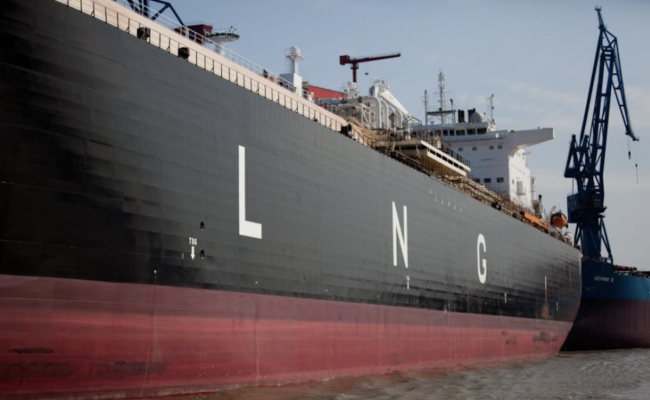Record-size Container Ship Sets Course for Arctic via Norwegian Coastline
Flying Fish 1, named Oakland at the time, outside Western Scheldt, Netherlands in February 2023. (Source: Photo courtesy of Peter Faas)
A massive container ship the length of three football fields traveled up the Norwegian coastline en route to China over the weekend. It is the latest sign of increasing Arctic traffic passing through the Norwegian and Barents Seas, including sanctioned and possibly underinsured “shadow fleet” vessels.
Norwegian waters are increasingly turning into a gateway for Arctic shipping. A Panamax containership, Flying Fish 1, is set to become the first-ever to traverse Russia’s Northern Sea Route.
The vessel is currently traveling north through Norway’s coastal waters and passed near Bodø in Northern Norway over the weekend.
Flying Fish 1 surpasses all previous Arctic container ships in capacity by nearly 50 percent. A container ship of that size is a rare sight in North Norwegian waters, which are traditionally visited by much smaller feeder vessels.
With a length of 294 meters across a width of 32 meters the vessel is designed to carry nearly 5,000 containers.
The vessel received a permit for Russia's Arctic route earlier this year. Routing information suggests it will be connecting St. Petersburg, from where it departed on September 3, with the Chinese city of Qingdao.
It is expected to arrive in the port in northeastern China around September 26, about 10 days faster than using the traditional route via the Suez Canal.

Position of Flying Fish 1 traveling through the Norwegian Sea on September 9. (Source: Shipatlas)
Container traffic continues to grow
While routine container traffic via the Arctic remains decades into the future, ad hoc and seasonal service have sprung up over the past few years.
Hong Kong-based NewNew Shipping Line completed seven container voyages via the Arctic last summer and has already surpassed those figures this year with two months remaining in the ice-free season.
EZ Safetrans Logistics, the owner of Flying Fish 1, is the latest entrant in the space. With a low Ice 1 ice-class the vessel’s permit allows for navigation on the route until the middle of October given the vessel sufficient time to complete a return trip.
Flying Fish 1 may soon be joined by two other EZ Safetrans Panamax vessels, SFT Turkey and SFT Egypt, which also hold Arctic permits, pushing the number of total container ship voyages for the year to close to 20.
While that figure pales in comparison to major traditional routes like the Suez and Panama Canals, which see thousands of vessels each year, it is significant development just six years after Maersk, the Danish shipping giant, dispatched the first-ever container ship Venta Maersk, through the Arctic.
Other niche operators will likely follow in the years to come.
Dark vessels in the Barents Sea
This summer also saw a record-amount of Russian liquefied natural gas, both from unsanctioned Yamal LNG and the blocked Arctic LNG 2 project, pass through Norway’s waters.
The shipping lanes to the west of Norway’s coast are increasingly becoming the site of a cat and mouse game between the U.S. and Russia, with the former placing sanctions on Arctic projects and the latter aiming to circumvent them.
In early August several sanctioned LNG carriers spent several days circling to the north of Norway turning off their transponders in an effort to avoid detection by U.S. officials.

Sanctioned LNG carrier Asya Energy traveling up and down the Norwegian coast in August and September, often with its AIS transponder deactivated. (Source: Shipatlas)
Similar practices in the oil sector have led to several accidents. One major collision between a shadow fleet oil tanker and another tanker occurred in the South China Sea on July 19, narrowly avoiding a major spill.
With the AIS transponder turned off the other tanker was unable to see the “dark vessel” on its monitors.
With similar “dark vessels” now operating in proximity of Norway en route to Russia the risk profile of shipping in the region has reached new levels.



